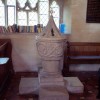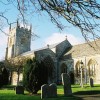During the summer of 1685 the West Country was in turmoil. The Duke of Monmouth’s short lived campaign to seize the throne failed, leaving many mothers without husbands and sons. Those of Monmouth’s supporters who survived the fight faced a journey to Dorchester and the rough justice dispensed by Judge Jefferies at what was to become known as the Bloody Assizes. (See our article: the Monmouth Rebellion, published 18th October 2012 in the General Category).
The 800 or so who were sentenced to be transported were the fortunate ones; nearly three hundred were sentenced to death and for many of those the journey out of this world was to be a cruel and barbaric one. A few saved themselves by testifying against their fellows, while some wealthy individuals were able to buy themselves a pardon and a lucky few managed to escape and blend back into their communities when the hue and cry had died down. (See our article: Prideaux Family at Forde Abbey published 20th July 2012 in Real Lives Category).
Supporters of Monmouth continued to be sought out until the announcement of a General Pardon in March 1686. One was James Daniel, a lawyer, who lived in Beaminster. Following the defeat at Sedgemoor he fled to his home town and hid in a closet in his house. Hearing that soldiers were heading towards Beaminster looking for him he hurried west out of town to Knowle Farm, where he hid in a barn and covered himself with straw.
The soldiers arrived at the farm and charged into the barn, stabbing at the straw with their bayonets; amazingly they missed him. Eventually, the soldiers abandoned their search, leaving the fugitive to wonder about his miraculous escape. He was sure God had saved his life.
Four years passed before things improved for the better and James Daniel’s life could return to something resembling normal. The first thing he did was to buy the barn and the land around it, establishing a private burial ground so he and his descendants would lie where he believed God had saved him. James Daniel lived a further three score years reaching the age of 100 before it was time for this former Rebel to return to Knowle Farm one last time. The burial ground remains to this day. Just 40 ft by 24 ft it is surrounded by a hedge of holly and a low stone ivy-covered wall, being entered through two large iron gates.
Those who fought on the side of the king returned to their homes and occupations, while some of the landed gentry who had supported the royal cause were received and thanked for their loyalty and service personally by the king in London.
In the thick of the battle commanding a troop of Dorset Horse was Thomas Chafin from Chettle. He was a devoted family man who frequently sent letters home to his wife; some of these have survived and provide us with first hand accounts of life on the field of battle, as well as giving us a glimpse into his relationship with his wife and his pride at being presented to James II.
In an early letter home Thomas Chafin tells of how his cousin was killed “barbarously” and goes on to say that one of his friends saved himself by hiding in a plot of kidney beans and how another escaped by running into a garret: “he was running as fast as he could thither and he and Thomas Clements and his gardener with him, well armed.” In another letter home he says: “after being fallen upon by rebels there was an hour’s fighting and away they ran”. He goes on to claim they took and killed a thousand of the rebels and captured three loads of arms.
In a further despatch to his wife who he addresses as: “My Dearest Creature” and closes with “… and blessings to the brats and let Nancy take true love from her Deare Tossey,” Chafin tells her they “had totally routed the enemies of God and the king and could not hear of 50 men together of the rebel army. Every hour they picked up rebels in fields, hedges, and ditches including the Duke of Monmouth’s valet; the duke’s last words to him were that he was undone”.
The Duke of Monmouth was captured hiding under a tree near Cranborne Chase, at a spot still referred to as Monmouth’s Ash. He was running from the battlefield, trying to get to Poole, where he hoped to secure a passage back to Holland. Instead he was taken to London under a guard of soldiers from 1st King’s Dragoon Guards and executed.
It is not clear if Chafin and his men were a part of that guard but certainly Chafin was in London for Monmouth’s execution, a fact he reports to his wife. He describes how he and Thomas Erle were presented to the king, who gave them his hand to kiss, so that the whole company gazed on them and wondered who they were. “Pray let ten cock chickens and two hens be sent to Thomas Erle’s speedily” Chafin orders, his wife adding: “The Duke of Monmouth’s head was severed from his body yesterday morning on Tower Hill. Blessing to Brats. So farewell, my dearest deare Nancy, quoth Tossey”.
The outcome of the conflict impacted the lives and relationships of many Dorset people. Some were cruelly sent to their deaths, some were shipped-off to far-away shores with no hope of seeing their loved ones again, and some were royally rewarded.



